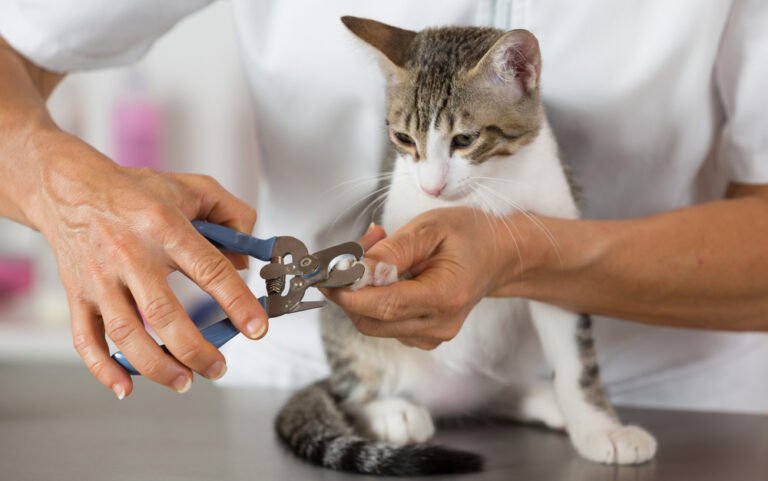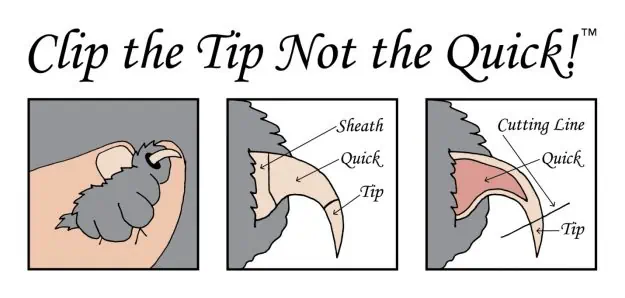Introduction
Cat nail trimming is a crucial element of your feline friend’s grooming regimen. Beyond safeguarding against painful scratches, it shields your furniture and belongings. Despite being perceived as daunting by many cat owners, this guide offers step-by-step instructions on safely and effectively managing your cat’s nail trimming.
Why Cat Nail Trimming Is Important:
- Furniture Protection: Cats scratch surfaces to maintain their claws, but this can wreak havoc on your furniture. Regular trimming can help minimize the damage.
- Human Comfort: If you’ve experienced accidental cat scratches, you know how important it is to keep those sharp claws under control.
- Paw Health: Overgrown nails can curl into the paw pads, causing discomfort, infections, and mobility issues.
- Stress Reduction: Regular and gentle nail trimming helps your cat stay accustomed to paw handling, reducing stress during the process.

Supplies Needed
Before you begin, gather the necessary supplies:
- Nail clippers designed specifically for cats
- Treats or a favorite toy for positive reinforcement
- Styptic powder or cornstarch to stop any bleeding in case of accidental cuts
You can buy Nail clipper, Treats and Styptic powder on Amazon.
Preparing Your Cat
Choose a quiet and comfortable area where you and your cat can relax. Make sure your cat is calm and in a cooperative mood. It’s best to trim your cat’s nails when they are sleepy or relaxed after a meal.
Step-by-Step Instructions
- Gently hold your cat’s paw and press their pad to extend the claws.
- Inspect the nails and identify the translucent area known as the quick. Avoid cutting into the quick as it can be painful and cause bleeding.
- Using cat nail clippers, carefully trim the pointed tip of each nail. Be cautious and trim a small amount at a time to avoid cutting into the quick.
- If your cat becomes anxious or agitated, take a break and try again later. It’s important to keep the experience positive for both you and your cat.
- After trimming all the nails, reward your cat with treats or playtime to reinforce positive behavior.

More about nail trimming Here.
Tips for Success
- Start trimming your cat’s nails at a young age to get them accustomed to the process.
- Be patient and take breaks if needed. It’s better to trim a few nails at a time than to risk injuring your cat.
- If you accidentally cut into the quick and bleeding occurs, apply styptic powder or cornstarch to stop the bleeding.
- Regularly check your cat’s nails and trim them every few weeks to maintain their length.
What Not to Do:
- Don’t Force It. If your cat is resisting, do not force the issue. This can lead to stress and make the process more challenging in the future.
- Avoid Cutting the Quick. Cutting the quick can be painful and may cause bleeding. If you’re unsure where it is, consult your veterinarian or a professional groomer.
- Don’t Punish. Never scold or punish your cat during or after nail trimming. This can create a negative association.
Conclusion
Trimming your cat’s nails doesn’t have to be a stressful experience. With the right tools, patience, and positive reinforcement, you can make it a routine part of your cat’s grooming. Remember to take it slow, be cautious, and reward your cat for their cooperation. Happy nail trimming!


Pingback: 11 Grooming Tips For Cat Owners
Pingback: Understanding Cat Scratching: Why Cats Scratch and How to Manage It